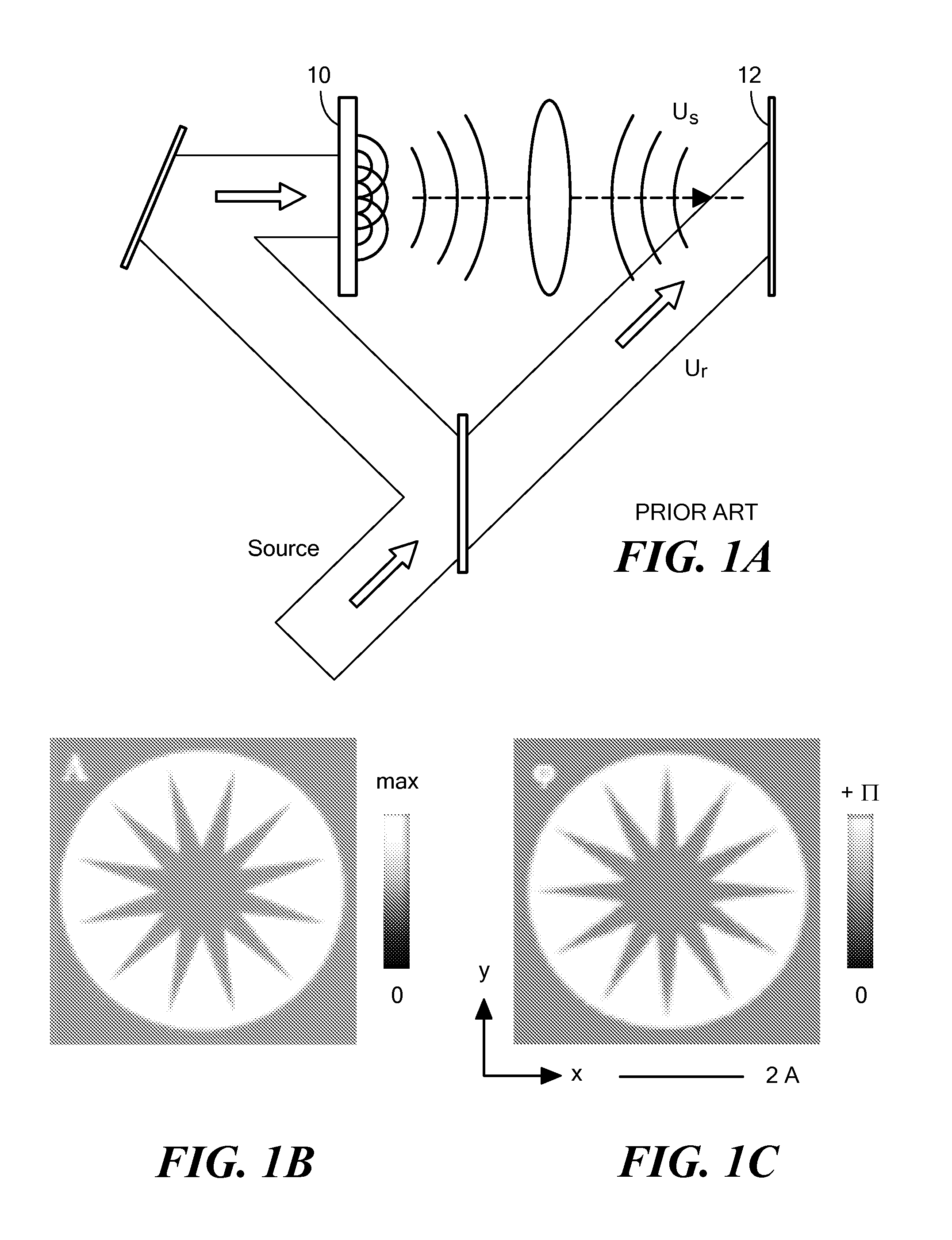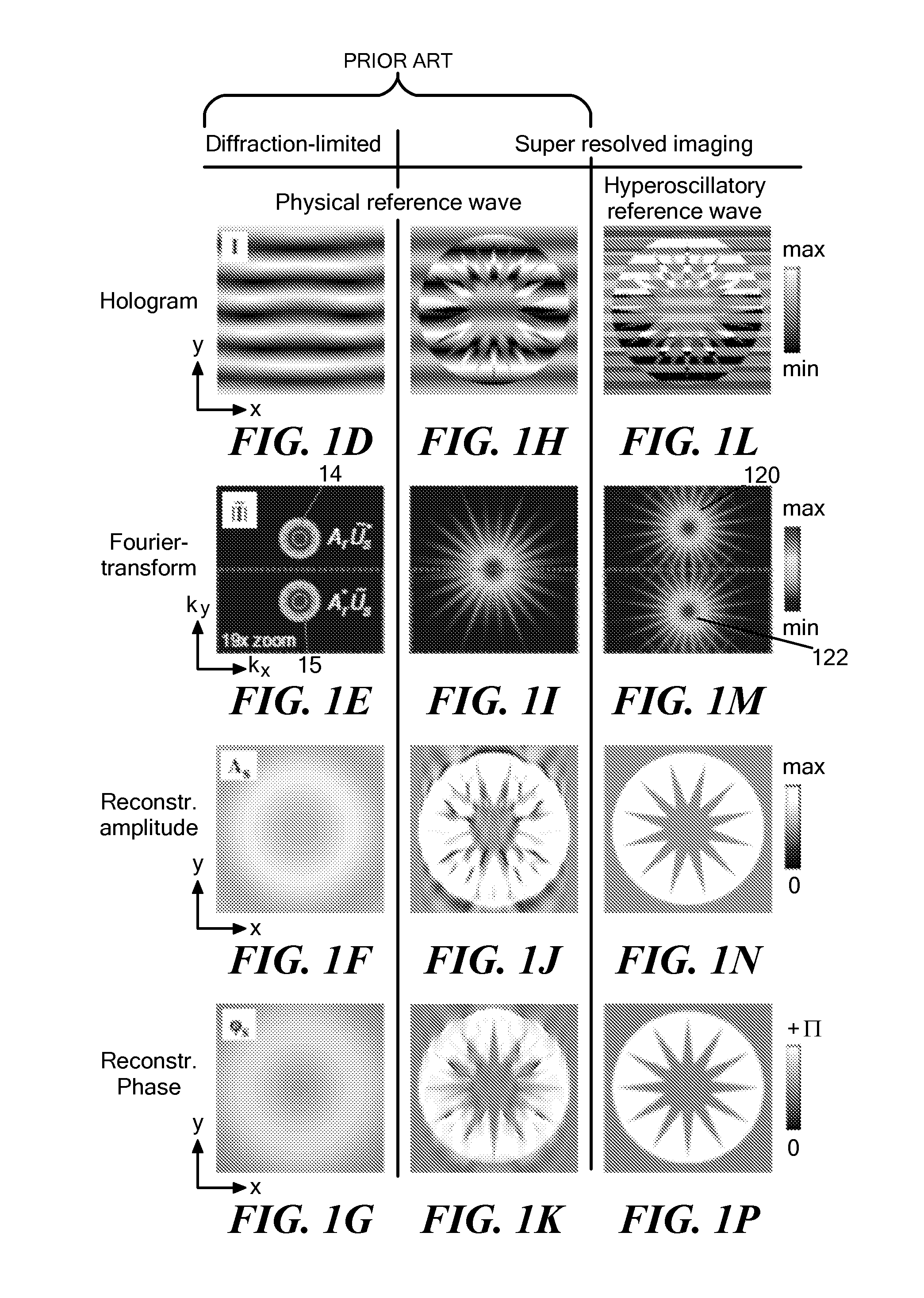Synthetic Optical Holography
a synthetic reference wave and holographic imaging technology, applied in the direction of holographic processes, holographic nature/properties, instruments, etc., can solve the problems of time multiplied by, unstable minimalistic scheme, phase information lost in the recording process
- Summary
- Abstract
- Description
- Claims
- Application Information
AI Technical Summary
Benefits of technology
Problems solved by technology
Method used
Image
Examples
example i
[0143]Application of an SRW in accordance with an embodiment of the present invention is now described with reference to FIGS. 4A-4C. The embodiment now described exemplifies optical nanoholography as applied to a scattering-type SNOM (s-SNOM). A plasmon IR-gap dipole antenna serves as sample 210 and, usefully for demonstrative purposes, exhibits well-defined amplitude and phase contrast. The sample topography in FIG. 4A shows the IR-gap nanoantenna consisting of two coaligned metal nanorods, each 3.6 um in length and 100 nm win width, that are separated by a 100 nm wide gap. A close inspection of the gap region (digital zoom-in shown in the right column of FIG. 4C reveals individual fringes: Lines showing strong contrast (white and black colors) correspond to a constructive interference of the scattered antenna near fields and the reference wave, while the uniform grey-colored lines reflect a destructive interference.
[0144]The s-SNOM employed in this Example is based on an atomic f...
example ii
[0146]The improvements in speed of the imaging in nanoholography enable much larger images to be acquired, thus shifting routine practice in phase-resolved near-field microscopy from kilopixels into the realm of digital cameras, namely, megapixels. FIG. 5A depicts an unprecedented 20 μm×20 μm, 2.25 Megapixel (1500x1500) optical near-field phase and amplitude image, acquired in 55 minutes. The sample 210 is a polished cross section of a ZnO nanowire array that shows a characteristic near-field amplitude and phase contrast owing to a radial doping profile. On each nanowire, a ring-like contrast is apparent in both amplitude and phase
[0147]The topography and optical images in FIG. 5A show the full measured area. To reveal individual wires, an exploded view of the boxed area is shown in FIG. 5B, while another subsequently exploded view is shown in 5C. Note that the exploded views are digital zoom-ins into the data of FIG. 5A and were not obtained by rescanning at high-resolution, rather...
PUM
 Login to View More
Login to View More Abstract
Description
Claims
Application Information
 Login to View More
Login to View More - R&D
- Intellectual Property
- Life Sciences
- Materials
- Tech Scout
- Unparalleled Data Quality
- Higher Quality Content
- 60% Fewer Hallucinations
Browse by: Latest US Patents, China's latest patents, Technical Efficacy Thesaurus, Application Domain, Technology Topic, Popular Technical Reports.
© 2025 PatSnap. All rights reserved.Legal|Privacy policy|Modern Slavery Act Transparency Statement|Sitemap|About US| Contact US: help@patsnap.com



